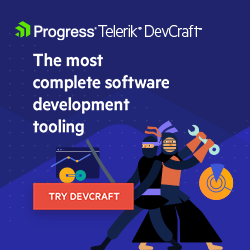Ship 60% Faster with AI-Assisted Development of Next.js and ASP.NET Core Sitefinity Widgets

Learn how to eliminate the learning curve with AI-driven Sitefinity widget development and simple prompts.
Marketing teams are already moving fast with generative AI—spinning up copy for product launch pages, campaign emails and social assets in minutes. With faster feedback loops and fewer bottlenecks, they’re able to focus more on refining the customer experience and staying in sync with shifting audience expectations. But while content is accelerating, development often can’t keep pace. A simple landing page widget or layout block often involves specs, handoffs and back-and-forth. That disconnect between creative speed and technical delivery is exactly where the Sitefinity AI-assisted project development makes a difference.
In modern web development, speed, clarity and flexibility matter more than ever—especially for lean teams under pressure to deliver.
Available now, the Sitefinity MCP (Model Context Protocol) server supporting Next.js and ASP.NET Core widget development marks a major shift: it brings AI-assistant project development directly into the developer workflow. By enabling AI-driven widget development, it allows both aspiring and seasoned Sitefinity developers to create production-ready widgets through simple prompts—without needing to master every platform detail upfront.
The result is faster output, less dependency on deep platform knowledge and more freedom for teams to move quickly, experiment and deliver real business value without increasing headcount.
Let’s dive into it.
Build Widgets with Prompts: Think Like a Prompt Engineer, Deliver Like a Frontend Dev
Historically, creating widgets in Sitefinity meant getting familiar with technical layers like metadata, configuration files and rendering conventions. Developers had to spend time upfront just to get started. And while exploring the documentation or taking a Sitefinity training course is always worthwhile, with requests stacking up and backlogs growing, many developers would welcome a copilot by their side.
“Create a carousel widget with an image, title and two buttons.”
The AI-assisted widget creation in Sitefinity CMS gets you go from setup to working widgets in minutes—no deep dive required.
This shift mirrors what AI has done for marketers—removing technical barriers so they can move faster. Now, developers benefit from the same acceleration. The result is faster output, quicker iterations and more time spent on UX and functionality rather than setup.
The Sitefinity MCP Server gives you:
- Support for Next.js and ASP.NET Core widget development.
- Reduced onboarding time for with up to 80% for new team members
- AI suggestions aligned with Sitefinity best practices
More importantly, your team can speed up widget development, shipping production-ready widgets in hours, not days and teams can scale without hitting knowledge bottlenecks.
Context-Aware Code Generation with MCP
The Sitefinity MCP server does more than generate code—it enriches AI tools like Copilot, Cursor and any other MCP client with Sitefinity-specific context, including widget structure, naming conventions and rendering logic. This turns them into powerful, platform-aware assistants that provide relevant, usable suggestions tailored to the Sitefinity platform.
The generated code also becomes a learning tool, enabling Sitefinity developers to ask questions and lern the best practices by example. It’s not just about speed—it’s about enabling momentum and growing capability as you build.
As a result, suggestions align with Sitefinity best practices and developers get contextual help that feels native to the platform.
Building Faster: 60% Drop in Widget Development Time
Based on internal usage data and developer feedback:
- Onboarding time for new developers dropped by 80%, from an average of 5 days to just 1 day.
- Widget development time was reduced by 60%, with most widgets now being built in under 2 hours instead of 5+.
These gains translate directly into team momentum. With less time spent ramping up or writing boilerplate, developers can focus on delivering actual features from the start.
This kind of efficiency is especially valuable in lean teams facing tight deadlines or limited hiring capacity. The MCP server for Next.js and ASP.NET Core widget generation allows the team to move faster, adapt quickly and deliver more—without adding pressure or sacrificing quality.
For the business, that means shorter timelines, faster feedback cycles and the ability to respond to change without losing development velocity.
From Prompt to Page: The Widget Development Flow
Widget development with the MCP server follows a simple, developer-friendly flow.
- Connect your local environment to the MCP server in Visual Studio Code using the provided URL and headers.
- Start working with Copilot to generate widget code from natural language prompts.
- Review or adjust the generated code as needed.
- Add the finished widget directly into a Sitefinity page.
Whether you're a new user or an established one scaling up, this is your shortcut to faster, smarter development. Give it try.

Angel Tsvetkov
Angel Tsvetkov is a goal-oriented tech geek passionate about building products. He has an exceptional ability to enter new environments and produce immediate results through the use of technical skills with excellent communication skills. Angel is inspired and truly believes in Lean product development. He loves to explore successful startups and mature companies, looking for patterns.

